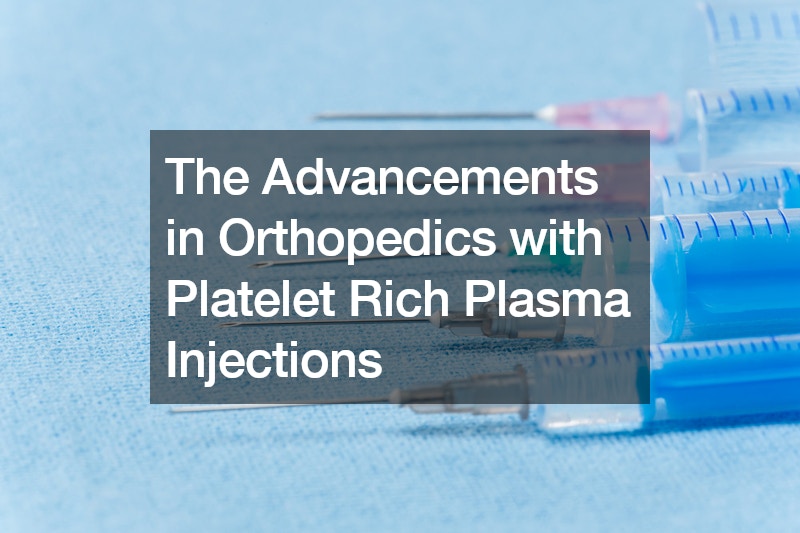

Platelet Rich Plasma injections have emerged as a groundbreaking treatment option in the realms of orthopedics and sports medicine. This innovative approach taps into the body’s own resources, utilizing platelets and growth factors to address a range of injuries and painful conditions. As the field of regenerative medicine continues to evolve, PRP stands out as a promising avenue for those seeking effective and natural solutions for their health concerns.
Understanding PRP: A Natural Approach to Healing
PRP, short for Platelet Rich Plasma, is a key player in the broader category of treatments known as orthobiologics or regenerative medicine. In this approach, the body’s innate capacity to control pain and inflammation is harnessed to treat various painful conditions.
Platelets, tiny cells circulating in the body, play a crucial role in tissue healing, pain control, and inflammation regulation. Additionally, PRP contains a wealth of growth factors that contribute to the body’s natural recovery processes.
The PRP Injection Process: A Brief Overview
The process of administering PRP injections involves drawing a patient’s blood using a small needle. The blood is then placed in a specialized tube and subjected to centrifugation. This spinning action separates the blood into layers, allowing the isolation of the layer containing platelets and growth factors. Under ultrasound guidance, this concentrated mixture is then injected into the targeted area that requires treatment. The entire procedure is relatively quick, lasting around 30 to 40 minutes, and is generally well-tolerated by patients.
Conditions Treated with PRP
Orthopedic research has shown a growing body of evidence supporting the efficacy of PRP in treating a variety of conditions related to joints, tendons, muscles, ligaments, and bones. Notably, PRP has proven particularly beneficial in addressing osteoarthritis, especially in the knee. However, research also suggests positive outcomes in treating conditions such as hip osteoarthritis, elbow tendinopathies like tennis elbow and golfer’s elbow, plantar fasciitis, and gluteal tendinopathies.
Benefits and Considerations of PRP
One of the key advantages of PRP lies in its natural and holistic approach to healing. Since it involves utilizing the patient’s own cells, there is virtually no risk of allergic reactions commonly associated with other injection treatments. The procedure is well-tolerated, and patients often experience minimal discomfort. It is essential to note that while PRP doesn’t claim to regenerate tissue, some studies suggest positive changes, especially in conditions like knee arthritis.
Preparation for Platelet Rich Plasma Draper Injections
Before undergoing PRP injections, individuals are advised to make specific preparations to optimize the effectiveness of the treatment. One crucial step is discontinuing non-steroidal anti-inflammatory medications, including aspirin and ibuprofen, at least two weeks before the injection. These medications can interfere with platelet function, impacting the overall success of the PRP procedure.
Patients are also encouraged to engage in cardio exercise about one week before the injection, which can increase platelet counts. Additionally, maintaining a healthy diet rich in natural foods and increasing water intake contributes to the overall success of the treatment. Adequate sleep is emphasized to support the body’s recovery and healing processes.
Post-PRP Care and Recovery
After receiving PRP injections, patients are advised to continue avoiding non-steroidal anti-inflammatory medications for at least two weeks. Strenuous activities that excessively load the treated area should be limited to allow the platelets sufficient time to work. While basic activities like grocery shopping are generally acceptable, patients should consult their doctors regarding specific restrictions after the injection.
Applying heat for short durations, three times a day, during the initial three days post-injection can help alleviate soreness. Heat is believed to enhance platelet signaling, potentially expediting the healing process. Rehabilitation post-PRP injection is crucial for promoting recovery, and patients are encouraged to restart their home exercise programs or engage in physical therapy about one week after the injection.
Platelet Rich Plasma Draper: A Natural Approach for Long-Term Wellness
For those exploring innovative treatments in orthopedics and sports medicine, Platelet Rich Plasma (PRP) injections offer a natural and promising avenue. As the field continues to advance, PRP stands out for its ability to harness the body’s own healing mechanisms, providing effective and personalized solutions for various conditions. Whether addressing osteoarthritis or tendinopathies, PRP showcases its potential as a holistic and long-term approach to overall wellness.
Platelet Rich Plasma Draper presents a compelling choice for those seeking natural and effective solutions to orthopedic and sports-related concerns. PRP utilizes the body’s own platelets and growth factors to accelerate healing, making it a low-risk, minimally invasive treatment option. With its potential to address conditions like osteoarthritis, tendinopathies, and joint issues, PRP stands as a holistic approach promoting long-term wellness. Platelet Rich Plasma Draper opt for PRP for its personalized, patient-centric methodology, offering a pathway to recovery that aligns with the body’s natural healing mechanisms, ultimately fostering a healthier and more active lifestyle.
.



